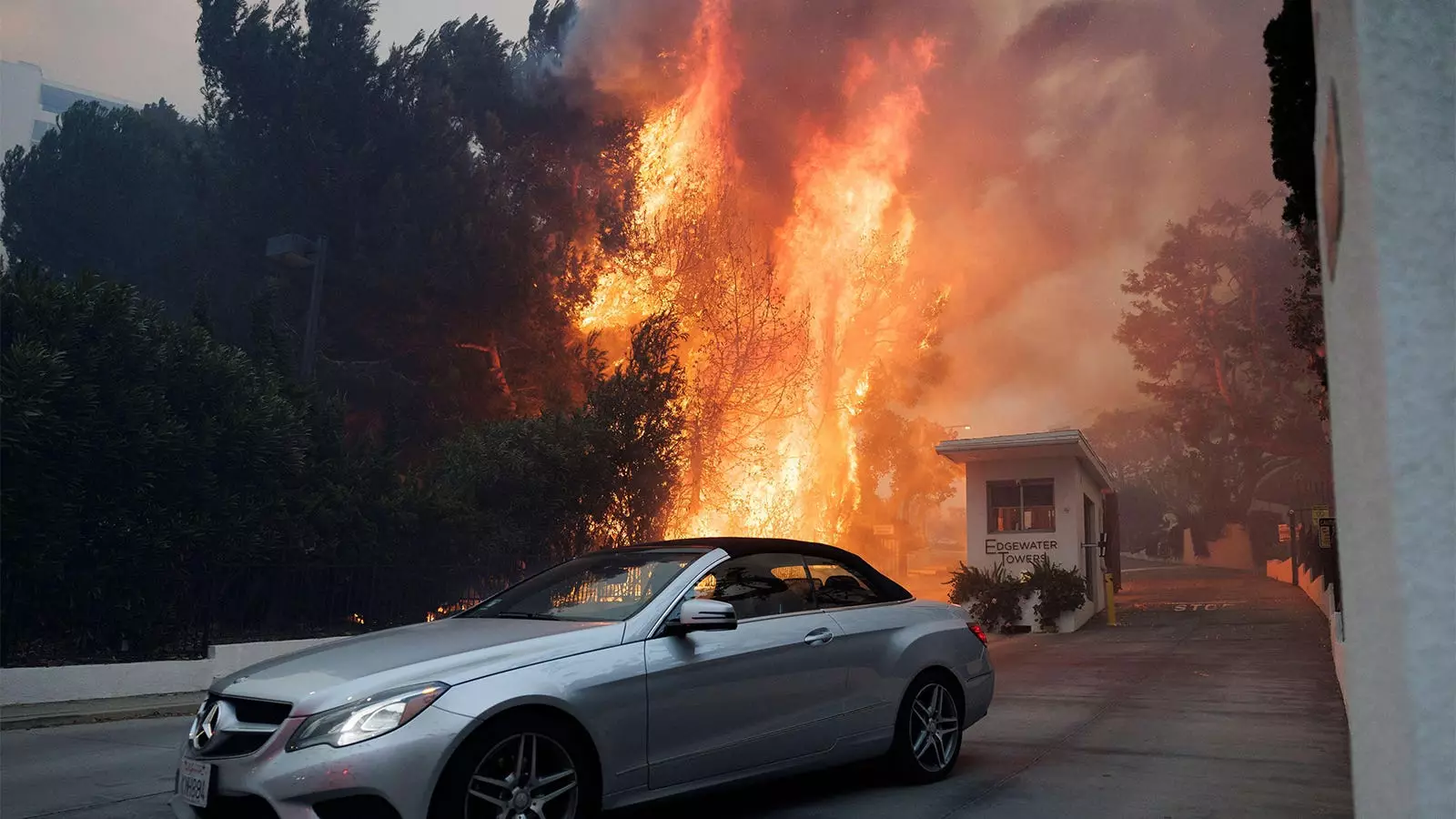Last Friday night, as I drove north along the 405 freeway, an unsettling scene unfolded around me: an eerily desolate highway. The usual bumper-to-bumper traffic was conspicuously absent, likely a symptom of the unprecedented scenario Los Angeles currently finds itself in. Above, the billowing smoke from the Palisades fire transformed the sky into a surreal Dali-esque spectacle, with strange, swirling shapes accusingly pointing downward at us, reminding us of our responsibility for the chaos. As I passed through the Sepulveda Pass, I felt enveloped in a strange cocoon of ash, the particulate matter swirling around me like ghosts of the environment I once knew. In the distance, the faint hum of helicopters brought an uncomfortable sense of urgency to the atmosphere, as if they were conducting a somber symphony for a city caught in a dire moment of crisis. By the time I reached the San Fernando Valley via the 101 Freeway, the scene became even more haunting. The hills glowed with fiery reds and oranges, mimicking a volcano that had lost its temper, spewing forth molten destruction.
This wildfire season is unlike any previous one. As it grips urban areas and wildland spaces alike, it is impacting countless residents who find themselves on the precarious urban-wildland interface. Buildings that once stood as bastions of safety are now crumbling, releasing a cocktail of toxic chemicals into the air, including hazardous particulates like PM2.5, remnants of plastics, fire retardants, and even asbestos. Such a toxic soup places both first responders and the community at large at considerable risk for inhalation injuries. Alarmingly, we are already observing a rise in emergency medical visits, fueled in part by inconsistent practices surrounding personal protective equipment. This immediate danger is compounded by the very real specter of long-term health effects associated with the toxic exposure, which may mimic the chronic health issues experienced by first responders to events like 9/11.
The cost of wildfires extends beyond physical health. The psychological toll, especially on those who have lost their homes, is also severe. Displaced families, regardless of age, are grappling with mental health challenges. From children to the elderly, the shadow of anxiety and post-traumatic stress disorder is looming, rendering the act of rebuilding lives even more complicated than the physical act of reconstruction.
As an expert in occupational and environmental medicine, I feel compelled to address the array of challenges that such crises present. The current wildfires in Los Angeles magnify the essential role that medical professionals in this field play during natural disasters. Equipped with extensive knowledge about the environmental hazards that can plague urban settings, we stand ready to coordinate responses among clinicians, public health officials, government agencies, and the private sector. The collaborative efforts are reminiscent of those during the aftermath of the 9/11 attacks, when medical professionals created monitoring frameworks for first responders, ensuring they received the appropriate care for long-term health consequences.
Our experience navigating public health crises has only heightened our resolve for ongoing initiatives. During the COVID-19 pandemic, our practitioners contributed to crafting safety protocols for work environments, ensuring employee safety while maintaining functionality in various sectors. Today, as we grapple with wildfires, our commitment to creating real-time environmental monitoring systems is critical. Such systems, aggregating data on air quality and pollution, can empower communities by providing actionable information during a crisis.
Moving forward, our agenda includes various strategies aimed at combating environmental disasters. We must focus on:
1. **Research Frameworks**: Investigate the long-term impacts of environmental hazards on diverse populations, including urban communities and vulnerable groups.
2. **Emergency Preparedness**: Enhance medical infrastructures to provide exposure-informed care efficiently and humanely.
3. **Innovative Partnerships**: Forge collaborations with tech leaders to develop state-of-the-art environmental monitoring tools that can be broadly applied.
4. **Personalized Guidance Systems**: Create individualized systems that adapt to varying environmental conditions and individual health profiles.
Despite the stark reality, there remains an imperative need for more practitioners in occupational and environmental medicine. Currently, the U.S. has seen a devastating decline in accredited residency programs, limiting the pipeline of new specialists in this critical field. As demands rise, it becomes vital to reinvest in these programs to ensure future generations are prepared for emerging threats for climate resilience.
Los Angeles is on the front lines of an evolving climate crisis that has deep societal and environmental implications. By merging data, medical expertise, and community engagement, we can transform our approach. The situation demands not just survival but resilience; we can redefine our cities as safe havens that harmoniously coexist with nature. As the skies grow dark, our vision for a sustainable future remains vibrant and clear. Collectively, we must step up, driving environmental innovation and bolstering our communities in the face of adversity. The time has come for Los Angeles—and by extension, other affected regions—to be a beacon of hope against the backdrop of climate change, demonstrating that human resilience has the power to forge a brighter tomorrow.



Leave a Reply